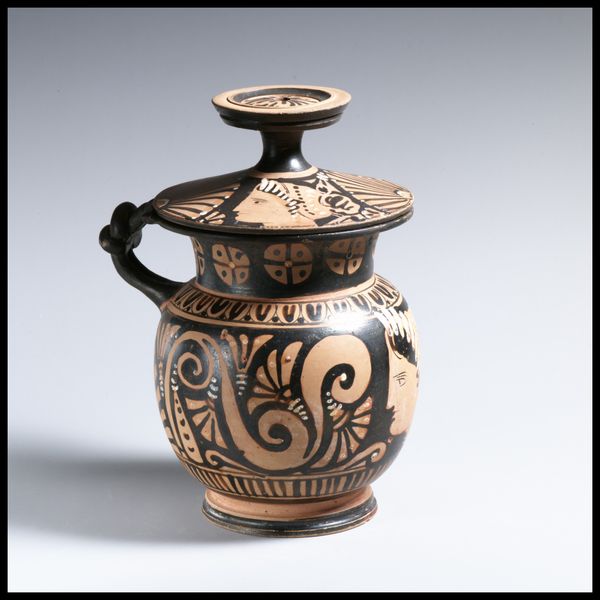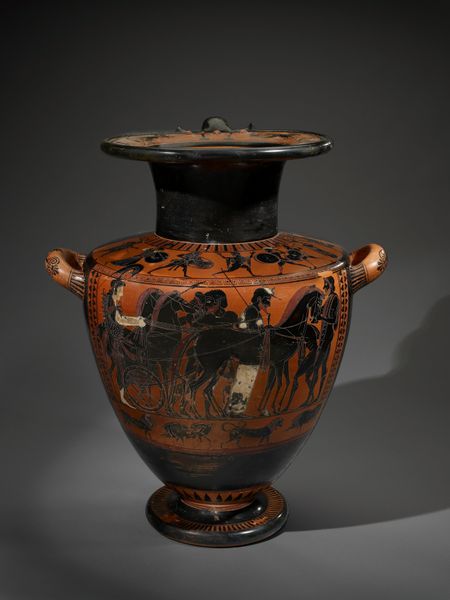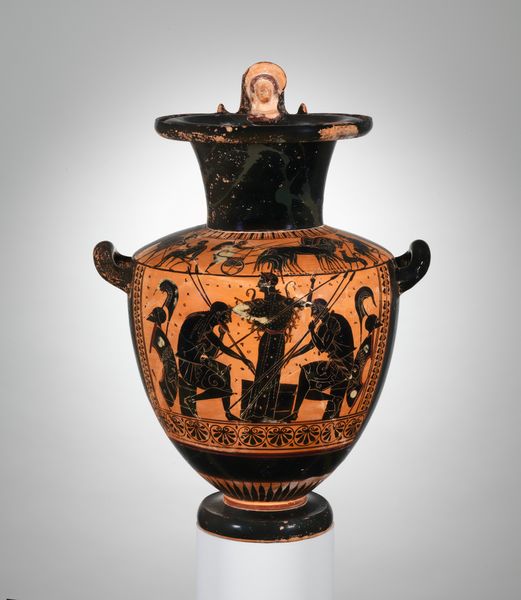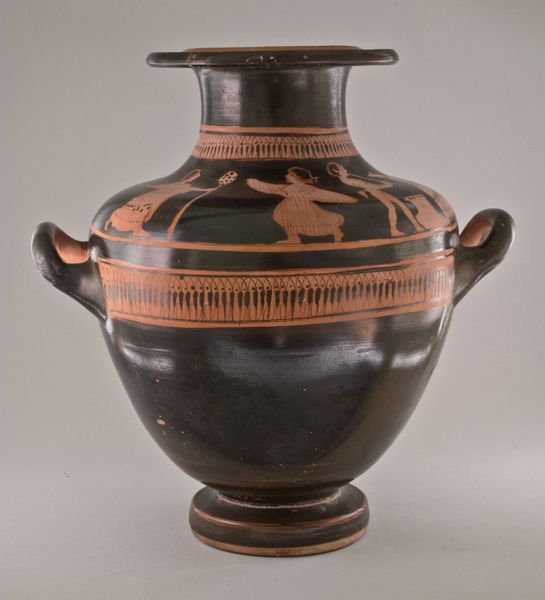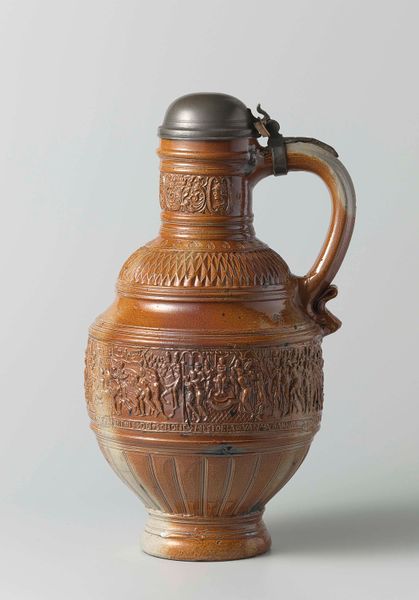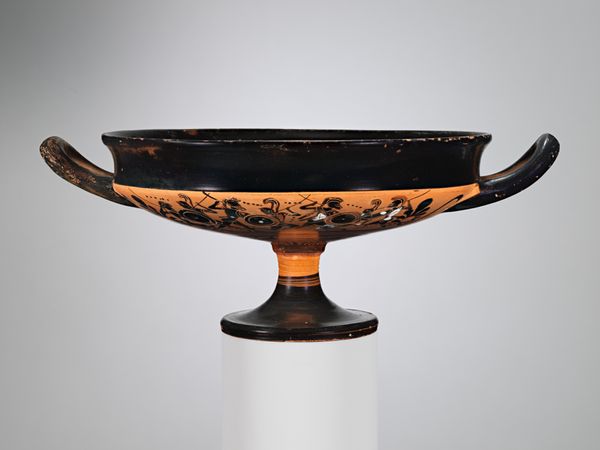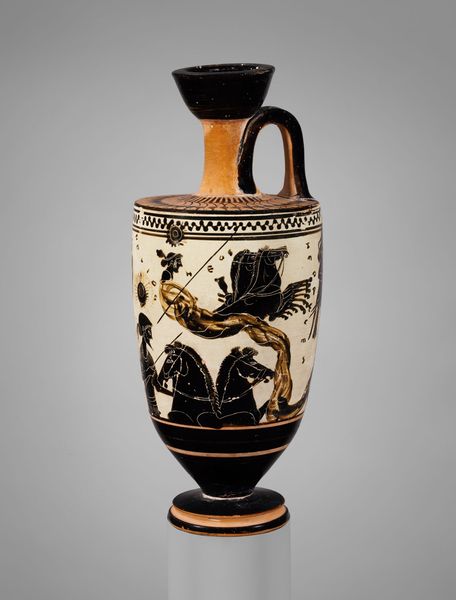
drawing, ceramic
#
drawing
#
greek-and-roman-art
#
ceramic
#
figuration
#
ancient-mediterranean
#
ceramic
Dimensions: H. 3 1/4 in. (8.3 cm)
Copyright: Public Domain
Curator: This terracotta skyphos, or deep drinking cup, crafted around 325 BC, is attributed to the Tondo Group and currently resides at the Metropolitan Museum of Art. Editor: It possesses such arresting visual balance. The dark slip provides this fantastic void within which ochre figures and geometric forms truly resonate. It suggests revelry and refined tastes, wouldn't you say? Curator: Indeed. Cups such as this were commonly used during symposia, which were social gatherings restricted to aristocratic men who met to converse, eat, and drink, often diluted wine. The imagery suggests a world of privilege and cultivated leisure. Editor: Notice the interplay of line and volume. The black background amplifies the ochre figures, giving them a sense of drama despite their small scale. The composition really exploits positive and negative space masterfully, drawing the eye in circular patterns around the object. Curator: And those figures likely draw upon recognizable myths or stories for the elite who used this cup. Imagery chosen would not have been for merely decorative purposes. It served social functions by indicating knowledge of stories known among particular societal groups. Editor: Absolutely. The shapes – the curves of the cup itself echoed in the stylized tendrils and wings—contribute to a harmonic whole. Even the handles seem integral, acting like counterpoints to the main frieze, not merely functional attachments. It is aesthetically a holistic product. Curator: Certainly. One can see that the decoration of this piece had meaning. The careful craftmanship and classical influences demonstrates wealth, class, and high status to its contemporary audience. Editor: Looking at its structure makes me consider the hands that shaped it. It almost sings. But it would certainly lose some of its harmony separated from the object it decorates; without the underlying structure, the scene's rhythm feels incomplete. Curator: Precisely. That is something that is often lost today. We see artifacts out of context. But they were intrinsically tied to specific cultural rituals, which provide the significance that underpins its aesthetics. Editor: Ultimately, what we see is a highly refined symbiosis of form and purpose. A reminder that even utilitarian objects can be imbued with profound artistic merit. Curator: And what this teaches us is to value both the intrinsic features and the circumstances to get a holistic view of this cup. It would not hold as much substance on its own in comparison.
Comments
No comments
Be the first to comment and join the conversation on the ultimate creative platform.
